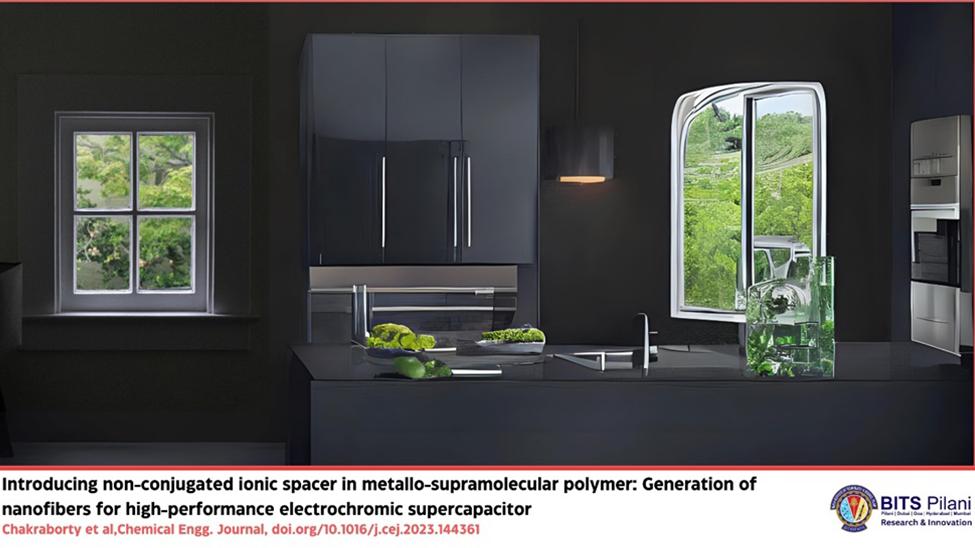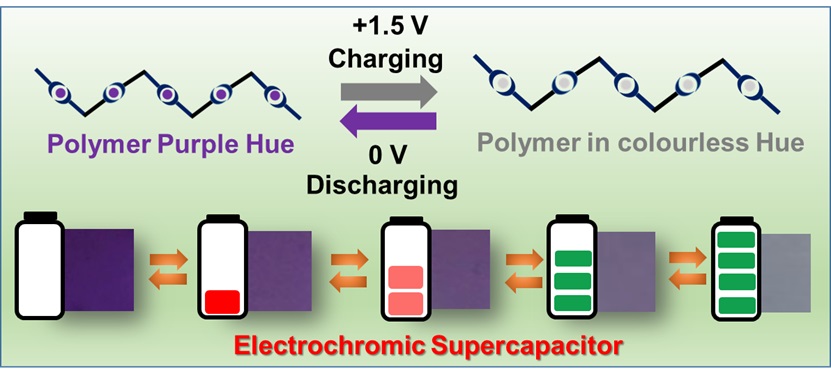Using Fe-TpyNTpy, the team developed a small proof-of-concept ESD with remarkable properties. The key to their approach was striking an optimal trade-off between optical memory, which indicates how well the material can retain its optical state, and fast switching. “We successfully balanced two opposite effects of electrochromism using Fe-TpyNTpy, resulting in a material with excellent qualities, including high optical contrast, shorter switching times, high coloration efficiency, and high optical memory that makes the device power efficient,” highlights Dr. Chakraborty.
Additionally, the proposed device exhibited great thermal stability and cyclability, showing no degradation in performance after ten thousand charge–discharge cycles. It could also hold its colour for over 30 minutes when receiving no power. Furthermore, the miniature device showed fast colour change in 2 seconds at a low voltage of 1.5 V, outperforming commercially available costlier alternatives such as tungsten oxide, which shows colour change in 15 to 20 seconds.
One of the most promising applications of the proposed ESD is smart windows. By charging or discharging the Fe-TpyNTpy polymer, one can alter its transparency and thereby control how much sunlight passes through the window and enters the building. In this way, one can easily reduce the amount of energy used for cooling, which is one of the main energy sinks in industrialised countries with hot climates. “Besides industry and transport, buildings use about 35% of the primary energy worldwide. In India, which has a very hot climate, the electrical peak power may be entirely dominated by air conditioning,” explains Dr. Chakraborty. “The proposed material, when applied to smart windows, could reduce the electricity consumption and cost of room cooling, thereby lowering the use of fossil fuels and helping mitigate global warming.”
Moreover, since the proposed ESD can efficiently store and deliver energy, smart windows equipped with it could function as power sources for various kinds of electronics. This could be particularly useful during a power outage, since smart windows could help keep the building’s electronic systems online. Worth noting, people in the building would be able to tell easily whether the windows are charged or not by observing their colour. “This innovative technology has the potential to revolutionise smart architectures in smart cities and could transform the way we think about windows and sustainable energy at the same time,” remarks Dr. Chakraborty.
This work was conducted in the Materials Center for Sustainable Energy & Environment (McSEE) established by the research team last year at BITS Pilani Hyderabad Campus. “McSEE serves as a platform for multidisciplinary research, specifically on materials for energy and the environment,” comments Dr. Chakraborty. “With wholehearted support from BITS Pilani, especially from our campus director, Prof. G Sundar, we have created a state-of-art infrastructure for energy research on our campus. We are thankful to BITS Pilani authority for providing us with the opportunity represented by the McSEE center to carry out this cutting-edge research.”
Let us hope that further research at BITS Pilani and its various campuses leads to a future with smart, exciting, and above all, sustainable technologies.


 An Institute of Eminence
An Institute of Eminence









